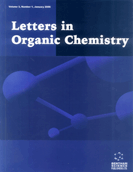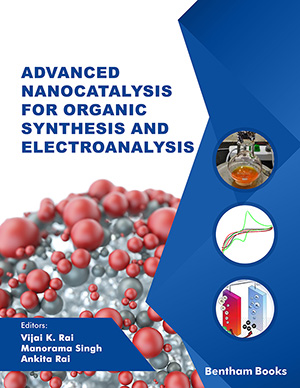Abstract
Data Science and Machine Learning approaches have recently expanded to accelerate the discovery of new materials, drugs, synthetic substances and automated compound identification. In the field of Organic Chemistry, Machine Learning and Data Science are commonly used to predict biological and physiochemical properties of molecules and are referred to as quantitative structure–active relationship (QSAR, for biological properties) and quantitative structure– property relationship (QSPR, for nonbiological properties). Data Science and Machine Learning applications are rapidly growing in chemistry and have been successfully applied to the discovery and optimization of molecular properties, optimization of synthesis, automated structure elucidation, and even the design of novel compounds. The main strength of Data Science tools is the ability to find patterns and relationships that even an experienced researcher may not be able to find, and research in chemistry can benefit from. Moreover, this interdisciplinary field is playing a central role in changing the way not only organic chemistry but also how chemistry is done. As cutting-edge ML tools and algorithms such as tensors, natural language processing, and transformers become mature and reliable by chemists. ML will be a routine analysis in a chemistry laboratory like any other technique or equipment.
Keywords: Organic chemistry, data science, machine learning, deep learning, technique, data science.
[http://dx.doi.org/10.1093/nar/gkv951] [PMID: 26400175]
[http://dx.doi.org/10.1021/ci049714+] [PMID: 15667143]
[http://dx.doi.org/10.1093/nar/gkw1074] [PMID: 27899562]
[http://dx.doi.org/10.1021/acs.jcim.7b00083] [PMID: 28481528]
[http://dx.doi.org/10.1016/j.commatsci.2020.110067]
[http://dx.doi.org/10.1016/j.ecoenv.2019.04.035] [PMID: 31026752]
[http://dx.doi.org/10.1016/j.sbi.2019.12.016]
[http://dx.doi.org/10.1002/qua.24836]
[http://dx.doi.org/10.3390/ph15020132] [PMID: 35215245]
[http://dx.doi.org/10.1002/chem.202202834] [PMID: 36206170]
[http://dx.doi.org/10.33774/chemrxiv-2021-kgd0h]
[http://dx.doi.org/10.1021/c160017a018]
[http://dx.doi.org/10.1021/ci960109j]
[http://dx.doi.org/10.1039/b502828k] [PMID: 15889163]
[http://dx.doi.org/10.1002/9783527645121.ch1]
[http://dx.doi.org/10.1021/ci049965i] [PMID: 15272833]
[http://dx.doi.org/10.1016/S0925-2312(03)00374-6]
[http://dx.doi.org/10.1111/j.1747-0285.2007.00575.x] [PMID: 17949360]
[http://dx.doi.org/10.1016/j.ejmech.2007.04.014] [PMID: 17602800]
[http://dx.doi.org/10.1186/s13321-019-0384-1] [PMID: 33430972]
[http://dx.doi.org/10.1016/j.molliq.2022.119042]
[http://dx.doi.org/10.1080/07391102.2016.1264892] [PMID: 27897084]
[http://dx.doi.org/10.1016/j.coche.2019.02.009]
[http://dx.doi.org/10.1021/acs.jcim.0c00971] [PMID: 33393291]
[http://dx.doi.org/10.1016/j.compchemeng.2010.04.018]
[http://dx.doi.org/10.1007/s12034-013-0588-3]
[http://dx.doi.org/10.1016/j.mtchem.2021.100625]
[http://dx.doi.org/10.1016/j.molliq.2020.115212]
[http://dx.doi.org/10.1016/j.drudis.2020.03.003]
[http://dx.doi.org/10.1016/j.commatsci.2015.10.041]
[http://dx.doi.org/10.1016/j.fuel.2021.121437]
[http://dx.doi.org/10.1016/j.tiv.2008.09.017] [PMID: 18940245]
[http://dx.doi.org/10.1016/j.jhazmat.2007.06.030] [PMID: 17630186]
[http://dx.doi.org/10.1021/ci00020a008]
[http://dx.doi.org/10.1021/ci950092p]
[http://dx.doi.org/10.1155/1994/702697]
[http://dx.doi.org/10.1021/ci0102970] [PMID: 11749580]
[http://dx.doi.org/10.1021/ci0502810]
[http://dx.doi.org/10.1021/acs.jpclett.1c00578] [PMID: 33826849]
[http://dx.doi.org/10.1021/acs.jcim.0c00293] [PMID: 32538625]
[http://dx.doi.org/10.3390/molecules23010103] [PMID: 29301376]
[http://dx.doi.org/10.1021/acscentsci.8b00357] [PMID: 30555898]
[http://dx.doi.org/10.1039/D2TA03728A]
[http://dx.doi.org/10.1021/acs.jctc.5b00099] [PMID: 26574412]
[http://dx.doi.org/10.1038/s41586-021-03213-y] [PMID: 33536653]
[http://dx.doi.org/10.1021/acs.accounts.0c00785] [PMID: 33528245]
[http://dx.doi.org/10.1002/advs.201900808] [PMID: 31728276]
[http://dx.doi.org/10.1186/s13007-022-00951-6] [PMID: 36335358]
[http://dx.doi.org/10.3998/ptpbio.3364]
[http://dx.doi.org/10.1021/ci600288m] [PMID: 17381164]
[http://dx.doi.org/10.1016/j.carbpol.2016.01.059] [PMID: 26917396]
[http://dx.doi.org/10.1007/s00253-010-2471-0] [PMID: 20204615]
[http://dx.doi.org/10.1038/sdata.2016.18] [PMID: 26978244]
[http://dx.doi.org/10.1021/acs.jchemed.1c00142]
[http://dx.doi.org/10.1021/acs.jcim.9b00266] [PMID: 31194543]
[http://dx.doi.org/10.1016/j.mtnano.2020.100087]
[http://dx.doi.org/10.1021/acs.jcim.1c01289]
[http://dx.doi.org/10.1039/D1EE00559F]
[http://dx.doi.org/10.1038/nmat4395] [PMID: 26395941]
[http://dx.doi.org/10.1021/acs.chemrestox.8b00393] [PMID: 30907586]
[http://dx.doi.org/10.1038/s41570-019-0124-0]
[http://dx.doi.org/10.1039/C7ME00107J]
[http://dx.doi.org/10.1021/acscentsci.7b00064] [PMID: 28573205]
[http://dx.doi.org/10.1038/nature25978] [PMID: 29595767]
[http://dx.doi.org/10.1515/pac-2022-0202]
 50
50 2
2

























